Filling
Regarding filling, experimenting is the best way to go. Especially bas reflex enclosures are sensitive to filling. As a general rule don't apply any filling around the vent. The vent relies on moving air, and any filling in that area will decrease the efficiency of the vent drastically. I've started with pritex beyond the woofer, which dampens reflections in the cabinet.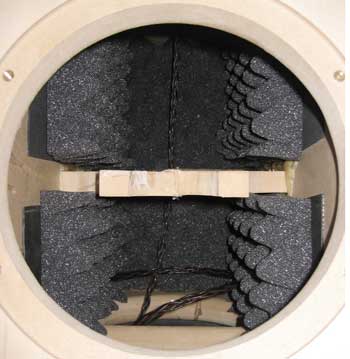
In a later stage, I've also added sheep wool beyond the woofer and midrange to dampen (audible) standing waves in the region of 300Hz. The final version contains filling in the whole cabinet.
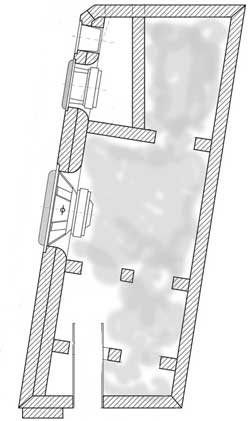
The amount of wool used is moderate. It is disentangled into strings, and applied from top to bottom without applying pressure.
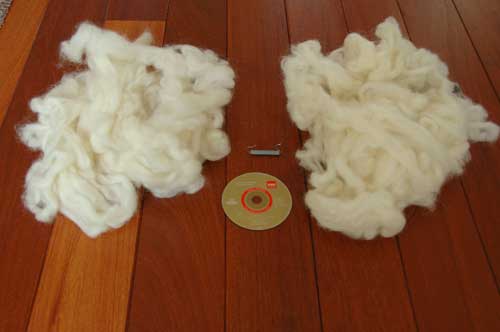
On he sides has been applied. The advantage is that it holds the sheep wool in its place (the brace beyond the woofer has been removed)


To check the amount and place of the filling, I've performed some (near-field) measurements to the woofer. The first measurement shows the (filtered) woofer measurement without sheep wool dampening. It shows clear standing waves at 300 Hz (standing wave in the height) and at 480Hz (standing wave to the backside).
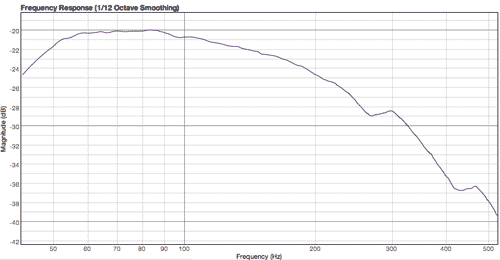
By adding a moderate amount of sheep wool just behind the woofer, the standing waves are attenuated at the expense of 1dB efficiency in the low end (green curve):

Halving the amount of dampening doesn't really improves the efficiency, and there is a slight tendency of standing waves (red curve, due to a small microphone distance difference it is moved downward a little bit):
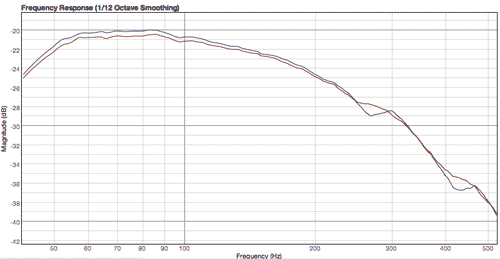
Filling the whole cabinet with sheep wool (green curve) adds another 0.2dB dampening, at the expense of loosing more efficiency at the bottom end:
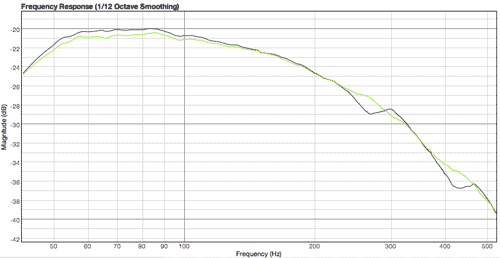
The following picture shows an zoomed comparison of all:

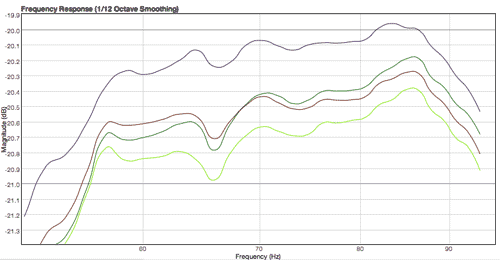
Regarding the midrange, a sheep wool sheet beyond the midrange unit and tweeter has been applied, and in a later stage sheep wool stuffing has been added (no picture).

The difference between the sheep wool sheet against the walls only (red), and sheep wool stuffing added in a later stage (green) is shown by the following response (about 0.3dB@1kHz).
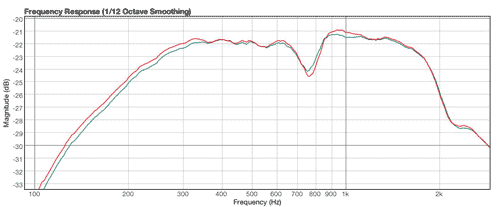
As can be seen, the filling attenuates the resonances at 800Hz and 1kHz, at the expense of some efficiency (max 0.75dB) below 350Hz. This measurement shows that the effect of dampening is not the same over the frequency range, and a filter needs to take the loss of efficiency into account. It also shows that "just adding dampening" gives the impression of loss of "life", as it affects the fundamental region, creating a sound with "lack of body".
From the waterfall diagrams, only minor differences can be seen. The first waterfall is without, the second is with sheep wool filling (looking 25dB deep, 10ms long - the regular "magazine reference").
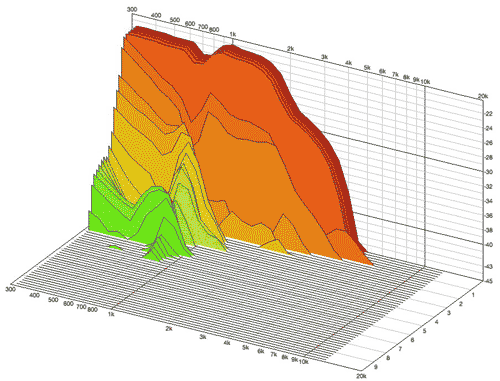
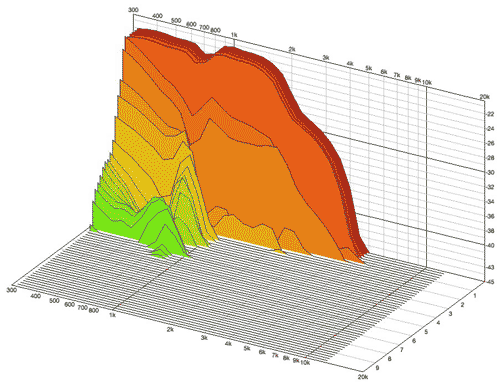
A waterfall with a 60dB resolution, 350ms doesn't provide more information, the spectrum is a bit less filled, and the peak at 800Hz less high:
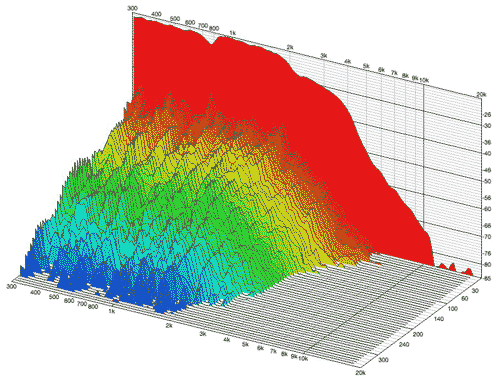
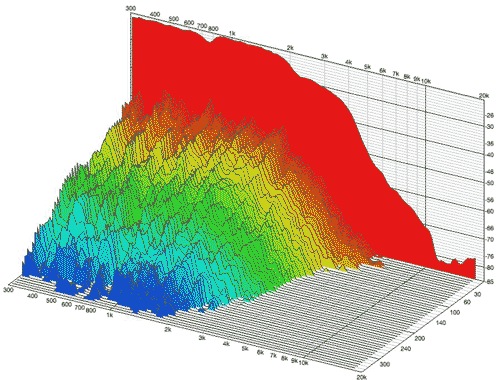
The audible effects are clear though; a more clean sound with the dampening added.
More info
For more info on filling, see the article about damping from Visaton (German).next ->